
Become a member
Join today and help protect nature, beauty and history – for everyone, for ever. Enjoy access to more than 500 places with National Trust membership.
Gardening on the grandest scale in this Georgian landscape garden and park
Stowe Gardens, Buckingham, Buckinghamshire, MK18 5EQ

| Asset | Opening time |
|---|---|
| Garden | Closed |
| Café | Closed |
| Park | 10:00 - 16:00 |
| Parlour Rooms and Bookshop | Closed |
| Shop | Closed |
| Ticket type | With Gift Aid | Without Gift Aid |
|---|---|---|
| Adult (18+) | £18.70 | £17.00 |
| Child (5-17) under 5s free | £9.40 | £8.50 |
| Family (2 Adults and up to 3 children) | £46.80 | £42.50 |
| 1 Adult, up to 4 Children | £28.10 | £25.50 |
Please email us for more details.
Second-hand bookshop is in the Visitor Centre at New Inn and in the Old Dairy within the Parlour Rooms.
Hot meals served between 12 noon-3pm.
Free parking for members and non-members. Plenty of accessible parking available.
Dogs are welcome on leads throughout the garden, parkland, shop and Parlour Rooms. Assistance dogs only are allowed in the café. You are very welcome to make use of our water bowls around site. Please pick up after your dog and place it in the doggy bins provided. Monthly dog walks available.
8 11kW electric vehicle charging points are available in the main carpark. Chargers can be accessed using mobile app, RFID card, or contactless payment device. Visit our EV charging provider RAW Charging’s website (rawcharging.com/drivers) to download the app in advance of your visit. Chargers are only available to visitors during opening hours
Guided tours are advertised on site daily.
Visitor information kiosk available.
Please email us for more details.
Plant shop is attached to the main shop.
Our shop is open daily from 11am.
Toilets available at New Inn and the entrance to the garden (including accessible toilet). Baby change facilities available at New Inn. Additional accessible toilet located in the corridor outside the cafe. New Inn and cafe corridor toilets are fitted with automatic hand-dryers.
Gardens are partly accessible, with uneven and hard gravel paths, hoggin and grass paths, and some steep slopes. 800m walk from the car park to the garden (free shuttle service available). Accessible car parking. Dogs on leads welcome – assistance dogs only in the café. Accessible toilets available.
Our team can speak through the best routes to get around the gardens.
Toilets available at New Inn and the entrance to the garden (including accessible toilet). Baby change facilities available at New Inn. Additional accessible toilet located in the corridor outside the cafe. New Inn and cafe corridor toilets are fitted with automatic hand-dryers.
Free parking for members and non-members. Plenty of accessible parking available.
Induction loops supported in the café, shop and Bell Gate kiosk.
Large-handled cutlery available on request.
The gardens include uneven and hard gravel paths, hoggin and grass pathways, steep slopes, and are hilly in places.
There are some narrow corridors within our Parlour Rooms at New Inn.
You can hire our single mini-crosser or manual wheelchair for free; to book please call or email us. You are welcome to bring your own all terrain vehicle if you have one.
Available for special events.
Seating is available at regular intervals along the visitor route. Picnic benches available in the picnic area to the left of the New Inn. Indoor and outdoor seating available for the café.
Available for special events.
The gardens include uneven and hard gravel paths, hoggin and grass pathways, steep slopes, and are hilly in places. There are some steps within our Parlour Rooms at New Inn.
Please be aware that there is an approx. 800m walk from the car park to the garden. Our shuttle buggies are available upon request if you require assistance getting to and from the garden. Please speak to a member of the team on arrival to make use of the buggy service.
Enjoy Stowe Gardens from the comfort of your own home: https://tourmkr.com/F1KTi5IcLP/36998734p&332.39h&106.26t
You can hire our single mini-crosser or manual wheelchair for free; to book please call or email us. You are welcome to bring your own all terrain vehicle if you have one.
There's something for everyone at Stowe. From children's trails to monthly dog walks, discover what events are coming up this season at Stowe Gardens.
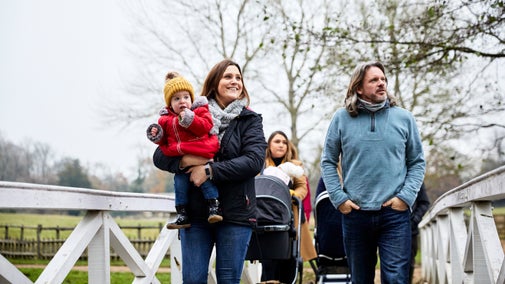
Find out about visiting Stowe Gardens with accessibility needs, including best routes, access statement and free entry for carers.
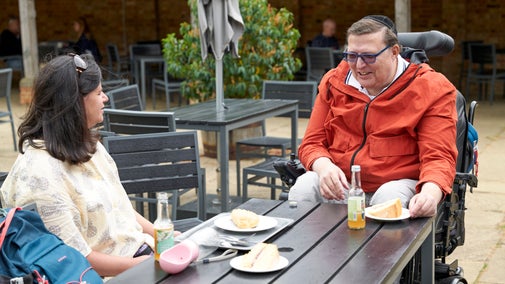
Download a visitor map ahead of your visit and plan your route!
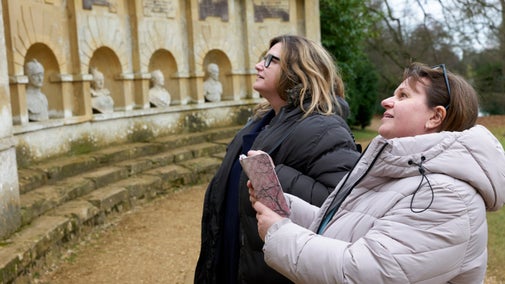
Take the kids on an outdoor adventure this season as you explore a world of lakes, magical woods, enormous temples, colourful reflections and twisted trees.

Stowe Gardens is a three pawprint rated place. Dogs are welcome on leads across the garden and parkland. Find out more about what to be aware of when walking your dog and the facilities available.

Learn more about our new partnership with Silverstone Circuit
Stowe Gardens and Silverstone Circuit have launched a three-year collaborative project to create a nature superhighway in the form of an accessible multi-user trail. The campaign aims to fast-track nature conservation and boost biodiversity in the area.

Find out more about hiring Stowe Gardens in Buckinghamshire for weddings, photoshoots, filming and private/corporate events.

18th-century landscape garden with expanses of grass, framed by trees, temples, monuments and shrubs, and reflected in tranquil stretches of water. 250 acres open for exploration. Whether you come for walking, socialising, creative pursuits, quality time, well-being, dog walking, having a picnic, or running wild, Stowe Gardens is what you make it.
Grand avenues, secluded woods and monuments dot the parkland with areas created by 'Capability' Brown. 750 acres of wonderful walks, bridleways and wildlife watching. You'll also glimpse a few historic highlights in the landscape.
Filled with rooms imitating ancient worlds and classical ruins, the house reflects the flamboyant characters of its creators. Stowe House is not owned by the National Trust. Please visit their website for details on opening: www.stowehouse.org.
Make memories, enjoy time with family and friends and discover a selection of individually designed snowmen on our winter trail at Stowe this year!

Discover the stories behind the paths of vice, virtue and liberty that run throughout Stowe Gardens and the individual beauty and significance of each area.
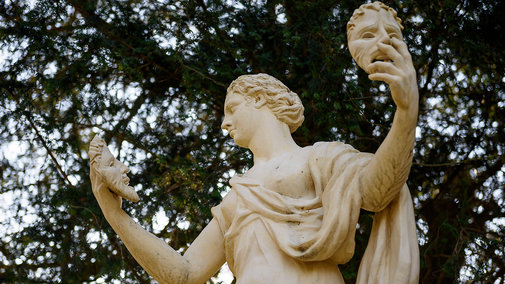
There’s more to Stowe than the famous Georgian landscape garden. Discover more views and monuments in the 1,000 acres of parkland surrounding Stowe's garden.

Discover more about the conservation work carried out since the National Trust was gifted Stowe in 1989 and explore our plans for the future.

At the heart of Stowe's garden is Stowe House, which is not owned by the National Trust. Discover how you can visit for refreshments and tours at certain times.

Pop into the shop and plant centre for the perfect gift or plant for your garden and enjoy hot or cold drinks and food made fresh at Stowe Gardens every morning.

Exploring Stowe Gardens on horseback is a great way to experience the landscape, sightlines and views designed to reveal the buildings, statues and monuments located across the grounds.

A 1.2-mile family-friendly walk along the lakeside path at Stowe Gardens, taking in the temples along the way.

Explore Lamport Gardens on this walk designed with those with little legs in mind!
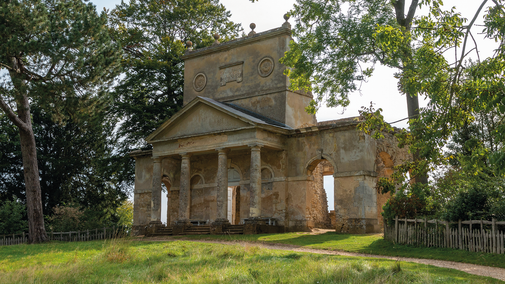
Join us for our winter trail and discover a selection of snowmen - or as we like to call them, Stowemen - individually designed by local community groups.
Join our team of volunteers and get creative making a 2026 calendar.
Get creative with us! Join us in January for our flower crown craft session.
Come along and join our Winter Wassail on Sunday 25 January. Huzzah! Dress in brightly coloured clothes and bring along something to make lots of noise to help ward off bad luck. Join us for some afternoon cheer and outdoor fun!
The scale and beauty of Stowe have attracted visitors for over 300 years. Picture-perfect views, winding paths, lakeside walks and temples create a timeless landscape, reflecting the changing seasons. Full of hidden meaning, the gardens were created as an earthly paradise and still cast their spell today.
The sheer size and space is perfect for those who love the outdoors and enjoy walking. A scenic walk from New Inn takes you into the gardens where another world awaits. Stowe is great to explore all day long when you venture out to the far reaches of the garden and parkland.
Come back time and time again to discover new routes in the garden or take a vigorous ramble in the parkland where more monuments wait to be explored, and see new views you won't find in the garden.
Unravel layers of history with a broad look at Stowe throughout the centuries, as well as the people who made it into the grand Georgian estate you can see today.
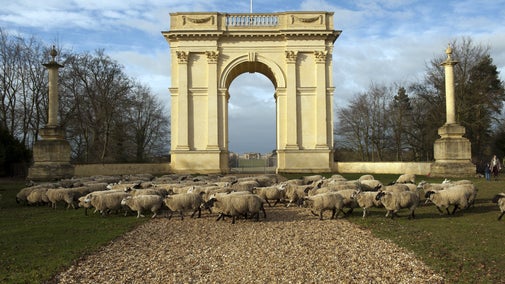
Find out how the buildings, monuments and statues located throughout the garden and parkland at Stowe contain much significance in their positioning and the stories they tell.

Discover how five people shaped the layout, design and structures we still enjoy today. Over less than 30 years this world-renowned garden took shape during their tenure.

Discover more about the conservation work carried out since the National Trust was gifted Stowe in 1989 and explore our plans for the future.

Everything you need to know about the proposal to create an improved, more accessible walking and wheeling route around the Stowe parkland, and how it will benefit people and nature.
Find out about how you can volunteer your time at Stowe Gardens and the many different opportunities for individuals or companies to get involved.


Join today and help protect nature, beauty and history – for everyone, for ever. Enjoy access to more than 500 places with National Trust membership.
By sharing your email address you’re agreeing to receive marketing emails from the National Trust and confirm you’re 18 years old or over. Please see our for more information on how we look after your personal data.